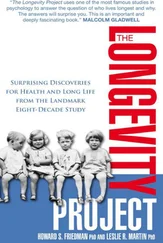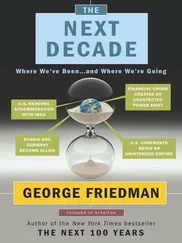I first wrestled with this issue while filming the Discovery Times documentary in Bangalore. One day we went to the Infosys campus around five p.m. -just when the Infosys call-center workers were flooding into the grounds for the overnight shift on foot, minibus, and motor scooter, while many of the more advanced engineers were leaving at the end of the day shift. The crew and I were standing at the gate observing this river of educated young people flowing in and out, many in animated conversation. They all looked as if they had scored 1,600 on their SATs, and I felt a real mind-eye split overtaking me.
My mind just kept telling me, “Ricardo is right, Ricardo is right, Ricardo is right.” David Ricardo (1772-1823) was the English economist who developed the free-trade theory of comparative advantage, which stipulates that if each nation specializes in the production of goods in which it has a comparative cost advantage and then trades with other nations for the goods in which they specialize, there will be an overall gain in trade, and overall income levels should rise in each trading country. So if all these Indian techies were doing what was their comparative advantage and then turning around and using their income to buy all the products from America that are our comparative advantage-from Corning Glass to Microsoft Windows-both our countries would benefit, even if some individual Indians or Americans might have to shift jobs in the transition. And one can see evidence of this mutual benefit in the sharp increase in exports and imports between the United States and India in recent years.
But my eye kept looking at all these Indian zippies and telling me something else: “Oh, my God, there are so many of them, and they all look so serious, so eager for work. And they just keep coming, wave after wave. How in the world can it possibly be good for my daughters and millions of other young Americans that these Indians can do the same jobs as they can for a fraction of the wages?”
When Ricardo was writing, goods were tradable, but for the most part knowledge work and services were not. There was no undersea fiberoptic cable to make knowledge jobs tradable between America and India back then. Just as I was getting worked up with worry, the Infosys spokeswoman accompanying me casually mentioned that last year Infosys India received “one million applications” from young Indians for nine thousand tech jobs.
Have a nice day.
I struggled over what to make of this scene. I don't want to see any American lose his or her job to foreign competition or to technological innovation. I sure wouldn't want to lose mine. When you lose your job, the unemployment rate is not 5.2 percent; it's 100 percent. No book about the flat world would be honest if it did not acknowledge such concerns, or acknowledge that there is some debate among economists about whether Ricardo is still right.
Having listened to the arguments on both sides, though, I come down where the great majority of economists come down-that Ricardo is still right and that more American individuals will be better off if we don't erect barriers to outsourcing, supply-chaining, and offshoring than if we do. The simple message of this chapter is that even as the world gets flat, America as a whole will benefit more by sticking to the basic principles of free trade, as it always has, than by trying to erect walls.
The main argument of the anti-outsourcing school is that in a flat world, not only are goods tradable, but many services have become trad-able as well. Because of this change, America and other developed countries could be headed for an absolute decline, not just a relative one, in their economic power and living standards unless they move to formally protect certain jobs from foreign competition. So many new players cannot enter the global economy-in service and knowledge fields now dominated by Americans, Europeans, and Japanese-without wages settling at a newer, lower equilibrium, this school argues.
The main counterargument from free-trade/outsourcing advocates is that while there may be a transition phase in certain fields, during which wages are dampened, there is no reason to believe that this dip will be permanent or across the board, as long as the global pie keeps growing. To suggest that it will be is to invoke the so-called lump of labor theory— the notion that there is a fixed lump of labor in the world and that once that lump is gobbled up, by either Americans or Indians or Japanese, there won't be any more jobs to go around. If we have the biggest lump of labor now, and then Indians offer to do this same work for less, they will get a bigger piece of the lump, and we will have less, or so this argument goes.
The main reason the lump of labor theory is wrong is that it is based on the assumption that everything that is going to be invented has been invented, and that therefore economic competition is a zero-sum game, a fight over a fixed lump. This assumption misses the fact that although jobs are often lost in bulk-to outsourcing or offshoring-by big individual companies, and this loss tends to make headlines, new jobs are also being created in fives, tens, and twenties by small companies that you can't see. It often takes a leap of faith to believe that it is happening. But it is happening. If it were not, America's unemployment rate would be much higher today than 5 percent. The reason it is happening is that as lower-end service and manufacturing jobs move out of Europe, America, and Japan to India, China, and the former Soviet Empire, the global pie not only grows larger-because more people have more income to spend-it also grows more complex, as more new jobs, and new specialties, are created.
Let me illustrate this with a simple example. Imagine that there are only two countries in the world-America and China. And imagine that the American economy has only 100 people. Of those 100 people, 80 are well-educated knowledge workers and 20 are less-educated low-skilled workers. Now imagine that the world goes flat and America enters into a free-trade agreement with China, which has 1,000 people but is a less developed country. So today China too has only 80 well-educated knowledge workers out of that 1,000, and it has 920 low-skilled workers. Before America entered into its free-trade agreement with China, there were only 80 knowledge workers in its world. Now there are 160 in our two-country world. The American knowledge workers feel like they have more competition, and they do. But if you look at the prize they are going after, it is now a much expanded and more complex market. It went from a market of 100 people to a market of 1,100 people, with many more needs and wants. So it should be win-win for both the American and Chinese knowledge workers.
Sure, some of the knowledge workers in America may have to move horizontally into new knowledge jobs, because of the competition from China. But with a market that big and complex, you can be sure that new knowledge jobs will open up at decent wages for anyone who keeps up his or her skills. So do not worry about our knowledge workers or the Chinese knowledge workers. They will both do fine with this bigger market.
“What do you mean, don't worry?” you ask. “How do we deal with the fact that those eighty knowledge workers from China will be willing to work for so much less than the eighty knowledge workers from America? How will this difference get resolved?”
It won't happen overnight, so some American knowledge workers may be affected in the transition, but the effects will not be permanent. Here, argues Stanford new economy specialist Paul Romer, is what you need to understand: The wages for the Chinese knowledge workers were so low because, although their skills were marketable globally like those of their American counterparts, they were trapped inside a stifled economy. Imagine how little a North Korean computer expert or brain surgeon is paid inside that huge prison of a nation! But as the Chinese economy opens up to the world and reforms, the wages of Chinese knowledge workers will rise up to American/world levels. Ours will not go down to the level of a stifled, walled-in economy. You can already see this happening in Bangalore, where competition for Indian software writers is rapidly pushing up their wages toward American/European levels-after decades of languishing while the Indian economy was closed. It is why Americans should be doing all they can to promote more and faster economic reform in India and China.
Читать дальше












